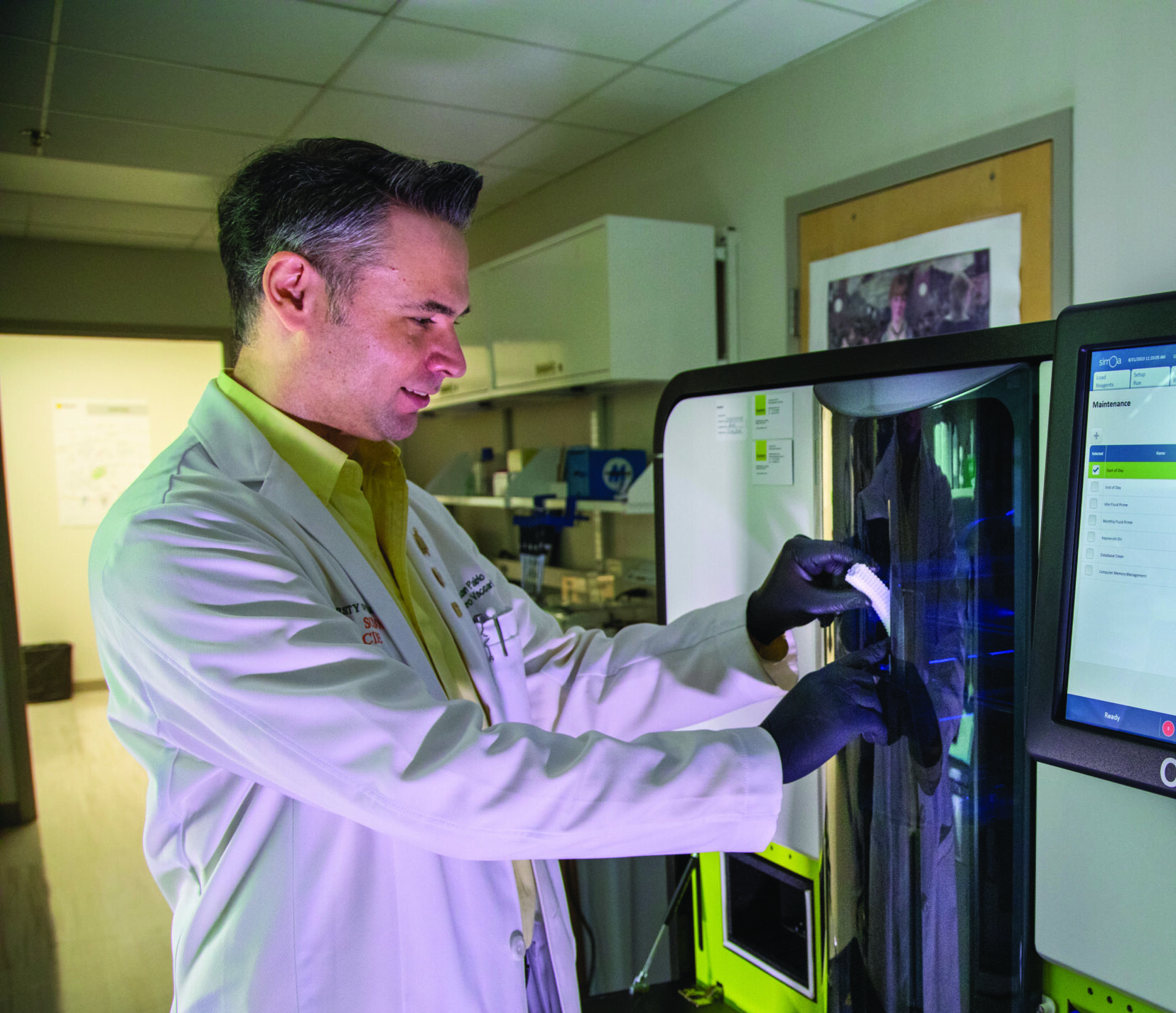(December, 2023) Currently there exists no cure for the primary insult induced by neurotrauma to the central nervous system. Given the robust quiver of treatments to improve function and quality of life, however, Juan Pablo de Rivero Vaccari, Ph.D., Associate Professor, and Nadine Kerr, Ph.D., Assistant Professor, are Miami Project neuroscientists working on pushing the horizon of how biomarkers can aid in these efforts. Biomarkers are molecules with concentrations measurable in the body that indicate the presence of a disease or injury. They are essentially chemical signatures of the condition and as such can be used to track the progression of a disease, to assess the effectiveness of a treatment, and identify patients who are at risk for further complications.
An exemplar biomarker is the naturally occurring exosomes that can be co-opted and employed in the biomarker role to interrogate the central nervous system after neurotrauma. These small vesicles released by cells are molecular spheres carrying a variety of molecules including proteins, lipids, and nucleic acids. Exosomes can be used to transport signaling molecules between cells, and they can also be used to deliver drugs to cells. As a biomarker, exosomes have been found to be elevated in the blood of patients with neurotrauma.
The observation of exosomes as biomarkers takes advantage of the naturally occurring phenomenon of tissue-tissue crosstalk, a topic scientifically championed by Dr. Kerr. Tissue-tissue crosstalk is the process by which cells in different tissues communicate with each other. This communication can be important for maintaining normal function, and is altered for better or for worse the context of neurotrauma. For example, inflammation in the brain can lead to inflammation in other tissues, such as the heart and lungs, hindering recover the systemic cooperation required for recovery.
Biomarkers might take advantage of viewing tissue-tissue crosstalk, allowing for an understanding of how different organs and tissues are affected by neurotrauma. The quantification of concentrations of molecules in various tissues, such as blood, might also simply allow for a view of the spillover of raw cellular material released from the physical insult itself. From this perspective, there are a virtually unlimited number of molecules that could be viewed as biomarkers if only they existed in tissues that are readily accessible and in concentrations that are measurable. Understandably, bodily fluids such as saliva, blood, and other natural experiments are ideal medium for non- and minimally-invasive biomarker measurement. Historically, molecular biomarker targets became undetectable once they entered these fluids due to the dilution of their concentration vastly constraining what could reliably be measured as a biomarker. Now, changes in technology are changing how we think about what is and is not a biomarker.
The future of biomarkers in neurotrauma is bright thanks to the development of new technologies employed by Drs. de Rivero Vaccari and Kerr that make it possible to measure biomarkers at concentrations as low as the “femto” range, equivalent to a single target per quadrillion liters of fluid. “We can now measure in the blood what used to be exclusive to the central nervous system”, explains Dr. de Rivero Vaccari. The advantage of using blood samples to understand what used to require a brain biopsy is obvious, pointing to the revolutionary potential of biomarkers. With the FDA similarly requesting biomarkers in conjunction to traditional scans, the robust in house capacity of The Miami Project’s full-stack biomarker laboratories will allow for tapping into the power of synergizing concentrations with pixels to grasp, and by doing so manipulate, neurotrauma.

